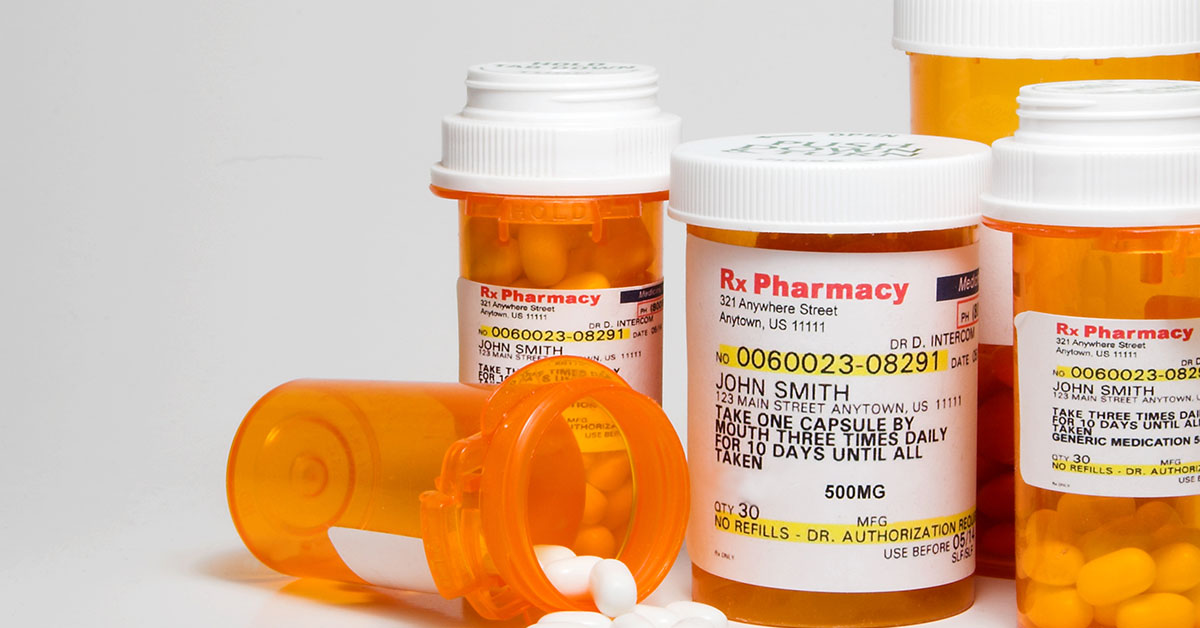06 Oct 10 Heart Breaking Facts about the Opioid Epidemic In Georgia
Table of Content
America is currently facing an opioid epidemic. States across the board have experienced a rise in opioid abuse and both addiction and overdose rates have followed. The issue is largely brought forth by overprescribed painkillers, noted by the coldblooded fact that the United States of America consumes over 75% of the world’s entire opioid supply. When taking into consideration that we as a country do not account for even a fifth of the world’s population, that statistic is gut-wrenching.
This problem is a recent development, however, as the real rise of opioid abuse began in the early 2000s. From 1999 to present day the prescription rates in the US have quadrupled. While opioids are certainly a breakthrough and necessary medication that helps suppress pain—particularly post-surgery—the addictive nature of the opium poppy (which is present in both opiates and opioids) has caused unparalleled damage in our communities. Nowadays more Americans die at the hands of overdoses than in car crashes. Within those overdoses, nearly 70% of are opioid or opiate related.
Each state has been affected differently. States like California and Texas have been able to somewhat evade the onslaught of the opioid disease, but states like Georgia have felt the ax harder than most. Within a decade Georgia has seen a 1000% rate rise in opioid overdose hospital admissions, and now that fentanyl—an opioid 50 times more powerful than heroin per microgram—has infiltrated their drug market, overdoses are spiking at an unprecedented rate.
Perhaps a bit of what we are addressing is a language you do not speak or is mostly jargon. Before we delve further into the opioid crisis and its tragic war against the people of Georgia, we’ll explain a bit about opioids as a whole.

What Exactly is an Opioid?
In short: opioids are a painkiller. Opioids are a medication synthesized from alkaloids in the sap of the opium poppy. They originate from the longest branching pain relief medication in humanity’s history; morphine. They are used explicitly for pain relief, but can also be considered sedatives that help with sleep. At one point or another you have probably crossed paths with an opioid, been prescribed one, or at the very least are familiar with their usage.
We’ll break down some of the opioids commonly prescribed to familiarize you with the drugs we’re speaking on.
Oxycontin and Percocet: both of these opioids fall under a medication called ‘Oxycodone,’ a drug commonly thought of as the catalyst for the opioid epidemic. It has twice the strength of morphine and nearly double the addictiveness. Oxycodone is generally administered to mitigate moderate-severe pain and almost always comes pressed as a pill. Recreationally, drug users will crush and snort them like cocaine, administer them intravenously, or mix them with alcohol.
Vicodin: the medical term for this particular opioid is called Hydrocodone, and if you have ever had any mild to severely invasive surgery then there is a high chance your doctor prescribed this to aid you in the healing process. Considered the gateway for opioids of higher severity, Vicodin is used to treat mild pain that requires more of a punch than over-the-counter painkillers.
Fentanyl: this opioid is the alpha of painkillers. If you haven’t heard of it, then a quick Google search will show you how many tags like ‘death,’ ‘overdose,’ and ‘killer,’ are associated with the drug. Fifty times stronger than heroin and one hundred times more powerful than morphine, Fentanyl is nothing short of a concentrated overdose. Developed in the late 60’s as an opioid to help late-stage cancer patients, this is a medication used for only the most severe pain. Nowadays, its integration into America’s drug market is killing people at rapid rates across the nation, and often times they are unsuspecting victims who unknowingly took the drug (being that it’s often cut into other drugs).
Now that you are aware of the types of opioids spearheading this epidemic, now we can move forward and address their affect in Georgia. Sadly, the facts below are not positive.
10 Facts about the Opioid Epidemic in Georgia
Fentanyl, the murderer—as if matters could not worsen with Georgia’s rampant heroin and opioid problem, fentanyl has now entered their drug market and it is causing mass-overdoses. Pills mills in China have found a way to replicate the molecular structure of fentanyl and smuggle large batches of the drug through our Mexican border. Being that it is easier to produce and produces the same effect as heroin in a much smaller volume (optimizing transportation), drug dealers have struck oil. Once unethical dealers purchase fentanyl and use it as an additive to give their product a competitive edge in the marketplace, many addicts use the same volume of said drug unknowing that it contains an opioid as powerful as fentanyl. For this reason we have witnessed a 200% rise in fentanyl related overdoses in Georgia. That number is suspected to be even higher when taking into consideration the postmortem tests that often classify certain properties as ‘opioids’ rather than the specific type of opioid in question. In Southwest Georgia, earlier this year in 2017, a batch of counterfeit opioids landed in the market. It was cut with a deadly dose of fentanyl. Unknown to the drug users, they took these pills under the assumption they were ‘clean’ and within hours dozens were hospitalized and four were dead from overdose. This case is one of many.
The demographic is shifting—it’s paramount to understand the demographic of drug addicts when it comes to a state like Georgia. Historically, drug addicts are most highly concentrated in low-income suburban neighborhoods, largely affecting minority communities. The most common ages of the afflicted are young adults: 18-25. Opioid addiction often begins in the doctor’s office, however, and we’re seeing an entirely new different demographic of drug users. In Georgia, Caucasian males and females from the ages of 20-30 are now creating their entire new pool of addicts. Even more terrifying, the most at risk for opioid addiction are senior citizens in age groups 55 and above, being that nowadays this addictive medication is used as a tool to help mitigate ‘elderly pain.’ Entirely different communities are experiencing a rise in opioid addiction.
Overdoses are spiking—there were around 1300~ overdoses that occurred in Georgia in 2015. Statewide criminal and drug-related data is often given in retro, meaning public information is typically allotted two years after the fact. However, the existing data shows that there has been a 51% rise in overdoses in the state since the previous decade. Of those overdoses, 80% of them are opioid-related. By the time the data begins to roll in for the current 2017, we’re expecting to see a higher climb in overdose rates. Our point being: opioid addiction often leads to overdose due to the sheer strength and nature of the drug, and that is tragically apparent in the state of Georgia.
A rise in heroin—Georgia is not a state that is quite as affected by drugs like cocaine and meth. While those illicit drugs are certainly apparent within their underground market, it is heroin that has boomed within the state. Heroin is an opiate derived from the opium poppy, meaning it can be considered a close cousin to opioids. Prescription pills are not easy to obtain—neither legally or illegally—and are a costly addiction. If addicts of any demographic experience difficulty refilling their prescriptions or finding a credible dealer, they switch to heroin because it allots relatively the same high. Another benefactor of heroin use as an opioid addict is that it is more readily accessible and cheaper. A single prescription pill can cost as much as $30 dollars on the black market, while a bag of heroin can sell for as cheap as $10.
 The opioid epidemic is costing Georgia money—to combat a problem as serious as the one Georgia and the rest of the United States is tackling takes infrastructure. Infrastructure is paid by our tax dollars. Funds that could otherwise be allocated to different facets of healthcare are now being streamlined into fighting the opioid epidemic. That means state-wide programs need funding to create awareness, stock up on naloxone (the drug used to reverse overdoses), and support treatment facilities need funding. Nationwide this is now a billion dollar problem. The Trump administration recently announced that they will be granting Georgia $11.7 million dollars to combat the heroin and opioid issue, but many healthcare professionals are saying that it’s not enough.
The opioid epidemic is costing Georgia money—to combat a problem as serious as the one Georgia and the rest of the United States is tackling takes infrastructure. Infrastructure is paid by our tax dollars. Funds that could otherwise be allocated to different facets of healthcare are now being streamlined into fighting the opioid epidemic. That means state-wide programs need funding to create awareness, stock up on naloxone (the drug used to reverse overdoses), and support treatment facilities need funding. Nationwide this is now a billion dollar problem. The Trump administration recently announced that they will be granting Georgia $11.7 million dollars to combat the heroin and opioid issue, but many healthcare professionals are saying that it’s not enough.
It’s the perfect place for drug smuggling, making it an easy target for mules—Georgia is a large state that rests in close proximity to South Carolina, North Carolina, Alabama, Tennessee, Florida, and all the way to New York. Their vast connection of open highways make for easy transport and there are multiple accessible borders to be exploited by drug mules. From the cocaine splash house of the 80s, to the heroin onslaught of the 90s, Georgia has been a prime choice for drug dealers to transport their product across the states. Sadly, they have also been a perfect hub to use as a central location for this trafficking, further exposing the state to a larger drug supply.
The Mexican Drug Cartels—if there’s room for an illicit activity, you can bet large crime organizations like the Mexican drug cartels are going to fill it. In an attempt to keep up with market demand, the drug cartels are now infiltrating Georgia with Chinese manufactured fentanyl. This puts Georgian communities at more risk for being involved or exposed to deadly crime syndicates. There are now multiple reports of the growing cartel influence in Georgia, something that was otherwise more specific to the western regions of America.
Crime is rising—again, the national crime index provides data in retro. However, within the last year there have been multiple pharmacies robbed in Georgia, a type of crime not recurrent in the state’s history. Up to $100,000 worth of painkillers have been stolen, with one such occurrence caught on camera as a thief broke through the window-wall with a sledgehammer. Two other pharmacies were victim to armed robberies, where the thieves stole thousands of dollars’ worth of pain medication meant for sickle cell and cancer patients. Georgia is now in the top ten list of most robbed pharmacies in the U.S.
Pill mills are being shut down, but the black market finds a source—in an attempt to mitigate the opioid problem, government officials cracked down on Georgia pill mills, an illicit production that has only grown since market demand rose. Unfortunately, this correction had an adverse effect. Due to the nature of the black market, when the shortage of counterfeit painkillers began to disrupt market supply, drug dealers rose to the occasion and began importing their product. A higher volume of drug trafficking occurred and is still on the rise in Georgia, with drug-related crimes trailing closely behind it.
The problem remains to be out of control. It would be gratifying to know that the infrastructure being built, government enforcement, and mass-awareness of the opioid epidemic was changing the tides but it’s not. The opioid epidemic continues to be a nationwide problem that is not only a financial burden, but a risk to our communities at a whole. Due to a lack of national support and structure in combating the rapidly evolving crisis, local communities are taking it upon themselves to try and right the issue. Little by little America is coming to grips with the magnitude of the problem at hand, but we have little to show for our success in fixing it. Georgia is no different. Addicts continuously turn out, heroin addiction is on the rise, fentanyl is in the streets, and the most imminent problem of all is that their citizens are dying.
It is going to take a ubiquitous rallying of funds, structure, and support to tackle the highly controversial issue of opioid addiction. Georgia is one of many states that have felt the entire length of the epidemic’s blade and it is only a matter of time before the problem worsens to a degree that a national siren is going to be rung. As with most problems, the first step is awareness. The more we educate our population on the epidemic, the more support we can garner.
Sources:
“Georgia Opioid Summary.” NIH. Feb. 2018. 11 Mar. 2019. https://www.drugabuse.gov/drugs-abuse/opioids/opioid-summaries-by-state/georgia-opioid-summary
Pirani, Fiza. “Opioids Now Kill More Americans Than Guns or Breast Cancer, CDC Says.” AJC. 21 Dec. 2017. 11 Mar. 2019. https://www.ajc.com/news/health-med-fit-science/opioids-now-kill-more-americans-than-guns-breast-cancer-cdc-says/DUx1KS33P4sbyzgj9T9rrN/
“Opioid Crisis.” Georgia Hospital Association. 11 Mar. 2019. https://www.gha.org/Opioid



 678-771-6411
678-771-6411


No Comments